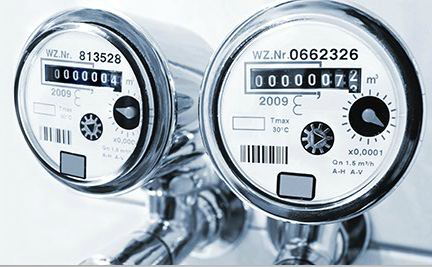Keeping up with utilities and energy costs is a hurdle for most senior living communities. Argentum senior living association recently reported on industry forecasts and trends: about 49 percent of decision makers said energy and utility costs are a moderate challenge for their business. About 5 percent of their peers reported energy and utility costs as a significant challenge. Electricity on the Rise The challenge arises from an increase in energy and utility costs. U.S. Energy Information Administration (EIA) reports that commercial electricity prices increased 3 percent from 2016 to 2017. From 2017 to 2018, businesses witnessed an additional 1 percent increase. In 2019, EIA projects prices to increase an additional .6 percent to 10.86 cents per kilowatt hour. Not all regions are affected equally. The Pacific region may experience a 3.5 percent increase above the national average in 2019. On the lower end of the spectrum, the South Atlantic may experience an increase of only 1.5 percent. Some regions will enjoy a decline in costs. The West South Central may be relieved with a drop of -3.4 percent and New England with a drop of -2.4 percent. Natural Gas Projections The national average for gas prices is expected to average $8.02 per thousand cubic feet in 2019, up 1.5 percent from 2018. Regional variations above the national average include West North Central at 6.4 percent, East North Central at 5.9 percent, and Mountain at 4.2 percent. New England may receive an average price drop of -5.5 percent as well as the Middle Atlantic at -2.7 percent. “The declines won’t be enough to offset the sharp increases registered in 2018,” warned the report. Making Changes Overall, utility costs by square foot varied drastically. Some senior living communities reported costs as low as 69 center...
Death to Power
The Changing Energy Industry
Editor’s note: This piece originally appeared in the fall issue of NAREIM Dialogues. Electrification is perhaps the greatest technological advancement of the 20th century. The electric power grid, the system that delivers electrification, is considered by many to be the largest and most successful machine ever built. But it may be about to die. The power grid “machine” is an interconnected system of long distance transmission lines, local distribution systems, transformers, substations, generating power plants, and the computers and control systems that manage it. In the United States, it delivers $400 billion in electricity annually over 7 million miles of power lines and through the efforts of 3,200 utility companies. The infrastructure in the system is valued at over $850 billion. Uptime is an astonishingly high 99.97% (I certainly wish my laptop could approach that level of reliability) and growth in the system is delivered relatively reliably by simply calling your utility. All this is delivered at price that is slightly below where it was in 1960 in real terms. This is an incredible success story; it seems like there is little here to concern real estate investors and owners…right? If only it were so simple. We have entered a period of incredibly rapid change in energy technologies, and the future of the utilities that deliver power to our buildings, and even the future of the electric grid itself, is in considerable flux. The forces threatening to disrupt the power grid include distributed solar systems, fuel cells, demand response technologies, battery storage, energy efficiency, electric vehicles, and various micro grid technologies. We can sum these up with the phrase: be your own power plant. Or to be cheeky, “adios, utility company.” Even if you think your particular investments, assets, buildings or properties won’t mess...
Choose Clean Power
Insight from MCEnergy
Evidence of climate change is all around us – for example, the amount of Americans with asthma has more than doubled in the past three decades, and rates are alarmingly high among lower-income people, who are more likely to live near a power plant. It’s no wonder that people are getting sicker when, as a country, we emit more than 5.5 billion tons of carbon dioxide (CO2) a year. As of August 2015, the Obama administration released a proposal to tackle this tremendous issue in the form of the Clean Power Plan (CPP). The plan sets the country’s first-ever national standards limiting carbon pollution from power plants, which were previously unregulated. The CPP aims to reduce carbon dioxide emissions by 32 percent by 2030 by establishing standards, but allowing individual states the flexibility to choose how this should be accomplished. With such a daunting goal, it can be confusing to know where to start when considering alternative energy for your properties. We caught up with Jennifer Burke, an energy consultant at Yardi subsidiary MCEnergy, to find out what this new plan means for the commercial real estate industry. How will the CPP affect commercial real estate? JB: The CPP is intended to reduce carbon emissions by 32 percent for U.S. power plants – below 2005 levels. Coal fired power plants are the greatest emitters of carbon. Therefore, the CPP will have the greatest impact to electricity pricing in geographic areas where coal is more dominant in the generation of electricity. The PJM ISO, the largest Independent System Operator (ISO) in the U.S., which encompasses 13 states in the mid-Atlantic region, has a relatively high concentration of coal fired power plants and will be impacted the most. As more coal plants are retired, there may...
Utility Legislation
SB750 on Submetering
SACRAMENTO, Calif. – Pending legislation that could bolster California’s water conservation efforts by mandating the metering of water in new construction throughout the state is moving forward. This week, the California State Senate passed an amended version of SB750, which would require individual unit water metering at all newly developed multiunit residential structures or mixed-use residential/commercial projects. SB750, introduced by Senator Lois Wolk (D-Davis), is being tracked by the Utility Conservation Coalition (UCC) and Utility Management Conservation Association (UCMA), two utility management advocacy associations. Martin Levkus, Yardi Systems’ Vice President and General Manager of YES Energy Management, is a director at the UCMA, which has provided technical expertise on submetering and utility billing to the bill’s authors to inform the legislation’s development process. The bill would require individual unit water meters or submeters in newly constructed multifamily or mixed-use residential and commercial properties that are under four stories. Existing properties would not be required to install submeters. Though a planned enforcement date of January 1, 2014, has been proposed, the legislation has yet to be approved and signed into law. Depending on when the bill is approved, the enforcement date could be delayed. Based largely on the advocacy of the UCC and UMCA, a recent amendment to the bill, considered crucial to many in the multifamily industry, removed a prohibition on Ratio Utility Billing Systems (RUBS) from the legislation. RUBS allow property owners to calculate the portion of water/sewer charges that are passed on to residents based on occupancy, the square footage of their apartment, or other associated factors. Under the current version of the bill, existing RUBS properties would be grandfathered, and landlords would be able to pass through a monthly administrative fee of up to $4.00. If the tenant’s water bill is...




